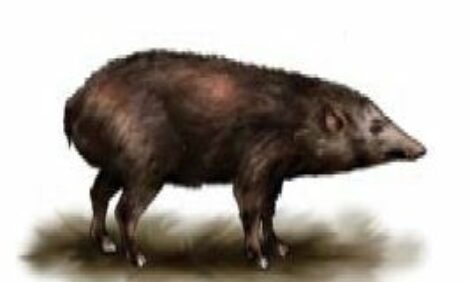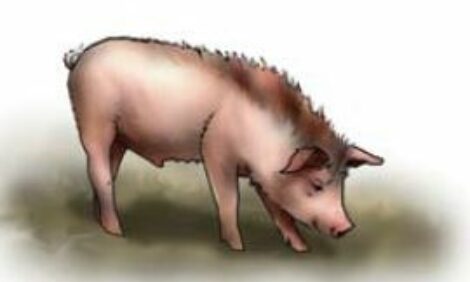



Kele
Kele are bred in Southwest China in the Yunnan-Guizhou mountainous areas, where the altitude is between 1700 to 2400 m. The climate in this area is dry and cold during the winter and humid in summer, characterized by erratic changes in weather. The main crops are potatoes and buckwheat, which means that this area is relatively poor in feed supply, and the pigs are often left out to pasture on the plateau with cattle and sheep.
Kele generally have an arched back and loin, long straight snouts, narrow chest, wrinkled hind legs, strong feet, and a light body. Much as other high-altitude pig breeds, it can be assumed that the Kele has adapted to its environment, as it does not appear to have been cross-bred to any significant extent historically. Kele pigs are also noted for their thick back fat (5.1 to 7.2 cm), and for more visceral fat than other, comparatively sized, breeds (15.6% of carcass weight). This extra fat may be considered a result of continuous selection for lard-heavy pigs, since people in mountainous areas have a special demand for fat in their diet. Kele pigs are relatively low in prolificacy, with a litter size about 7 to 8 and 5 to 6 pairs of teats.








